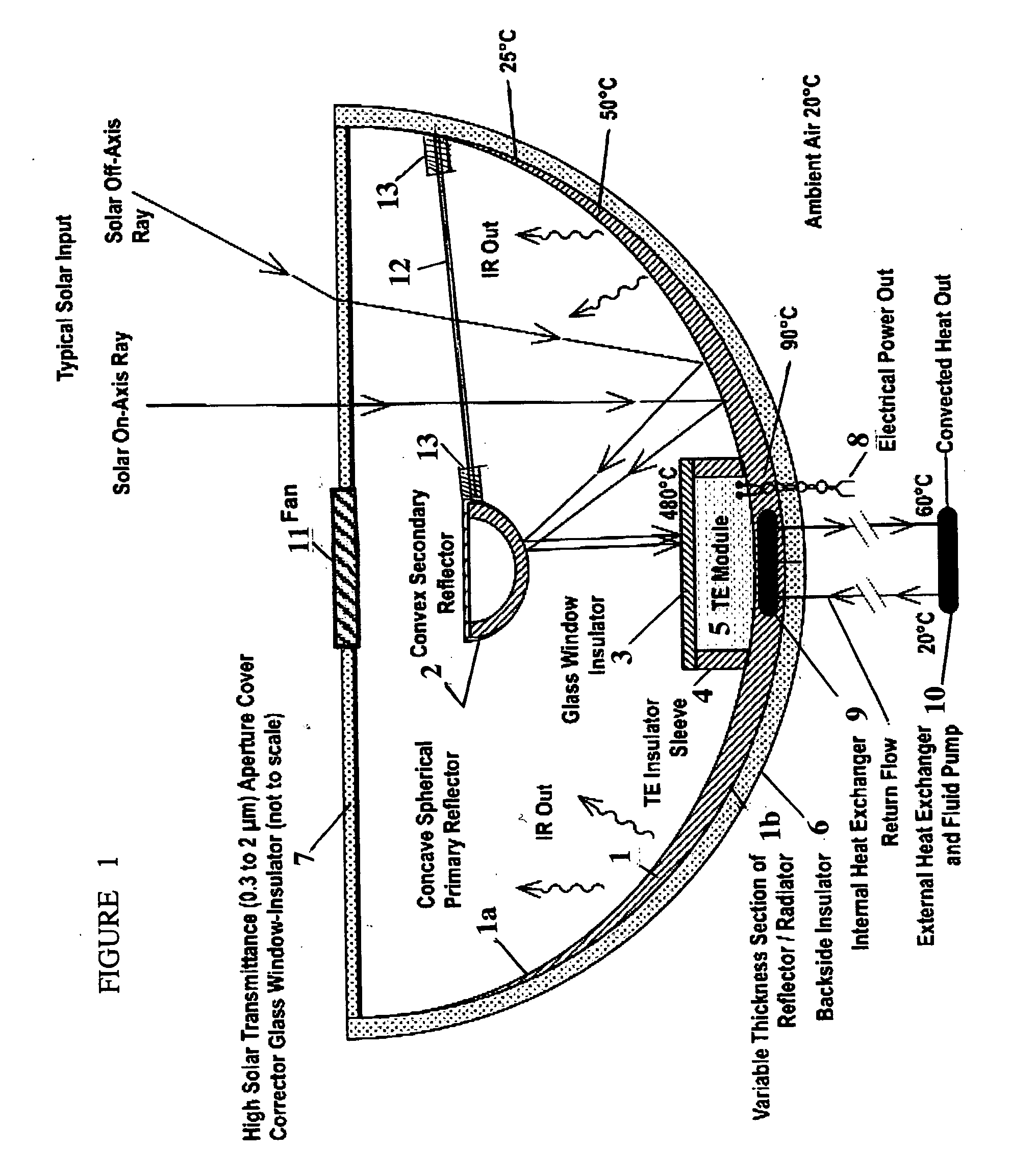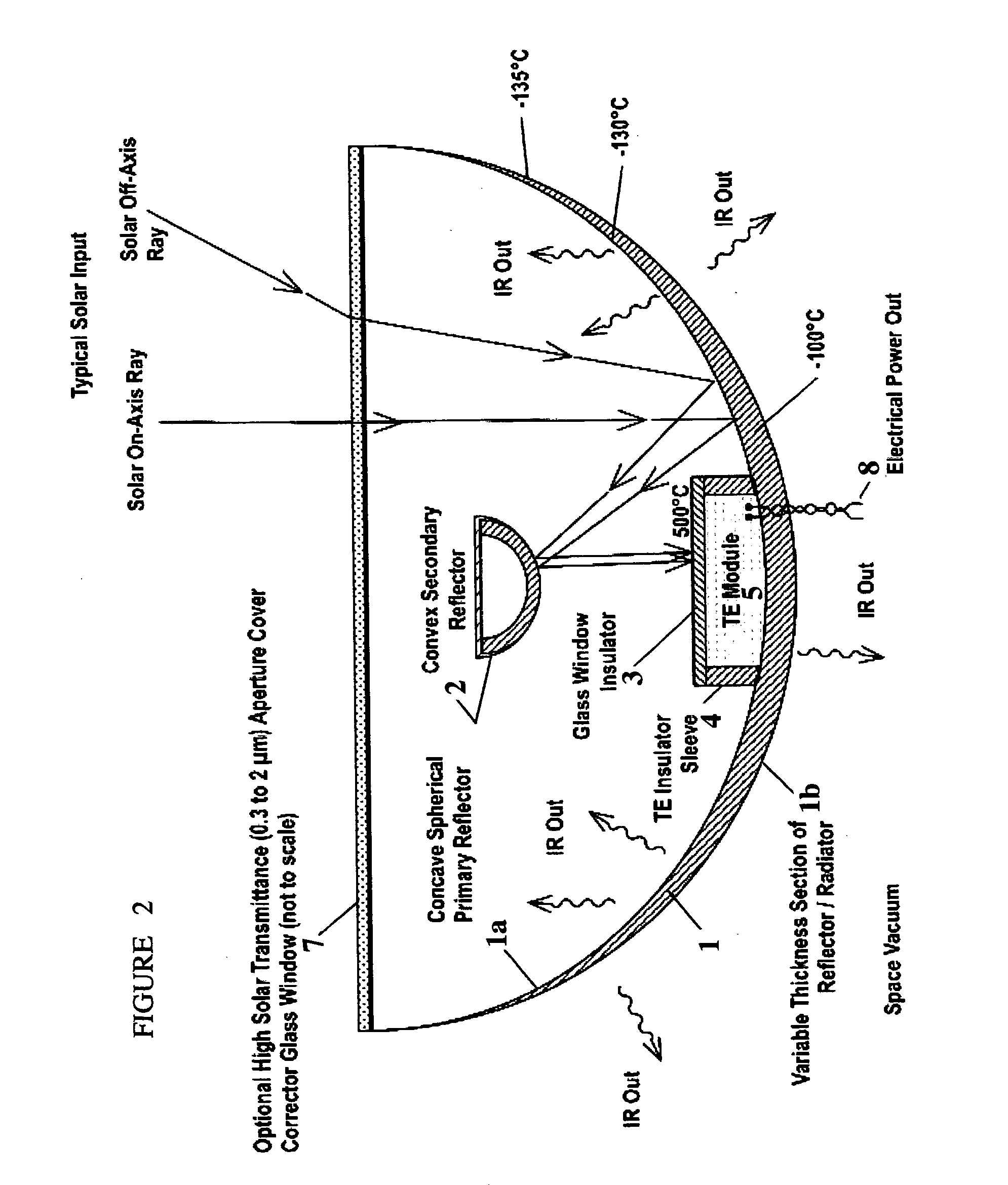Concentrated solar thermoelectric power system and numerical design model
a solar thermal and power system technology, applied in the direction of solar heat collectors, lighting and heating equipment, instruments, etc., can solve the problems of destroying the module, not being innovative or original, and removing heat from the cold side of the te module, so as to increase the maximum heat-to-electricity conversion efficiency, the effect of high solar energy-to-electricity conversion efficiency and maximum efficiency
- Summary
- Abstract
- Description
- Claims
- Application Information
AI Technical Summary
Benefits of technology
Problems solved by technology
Method used
Image
Examples
Embodiment Construction
[0031]Thermo-optical Configurations
[0032]The basic design configuration is shown in one embodiment in FIG. 1 and comprises a dual function concave spherical primary reflector 1a / radiator 1b integrated as a single component 1, a convex secondary reflector component 2, and two TE module insulating elements—a glass window insulator 3 and a TE insulator sleeve 4—which are used in conjunction with a TE module 5 consisting of TE semiconductor devices comprising n and p couples. The TE module has a highly absorptive coating in the solar spectrum on its exposed external hot side surface at the window insulator interface for the purpose of converting the concentrated solar energy flux projected onto that surface into an input heat flow Qin. This arrangement effectively creates a high temperature on the hotter side of the TE module, and a large temperature difference ΔT across the module results from heat removal at the TE module cold side. A fraction ηte of the resulting input heat flow prod...
PUM
 Login to View More
Login to View More Abstract
Description
Claims
Application Information
 Login to View More
Login to View More - R&D
- Intellectual Property
- Life Sciences
- Materials
- Tech Scout
- Unparalleled Data Quality
- Higher Quality Content
- 60% Fewer Hallucinations
Browse by: Latest US Patents, China's latest patents, Technical Efficacy Thesaurus, Application Domain, Technology Topic, Popular Technical Reports.
© 2025 PatSnap. All rights reserved.Legal|Privacy policy|Modern Slavery Act Transparency Statement|Sitemap|About US| Contact US: help@patsnap.com



